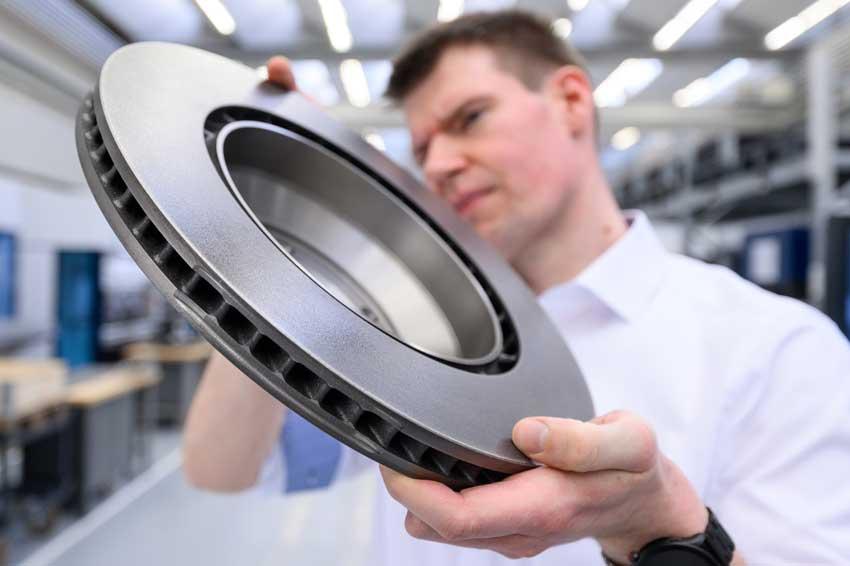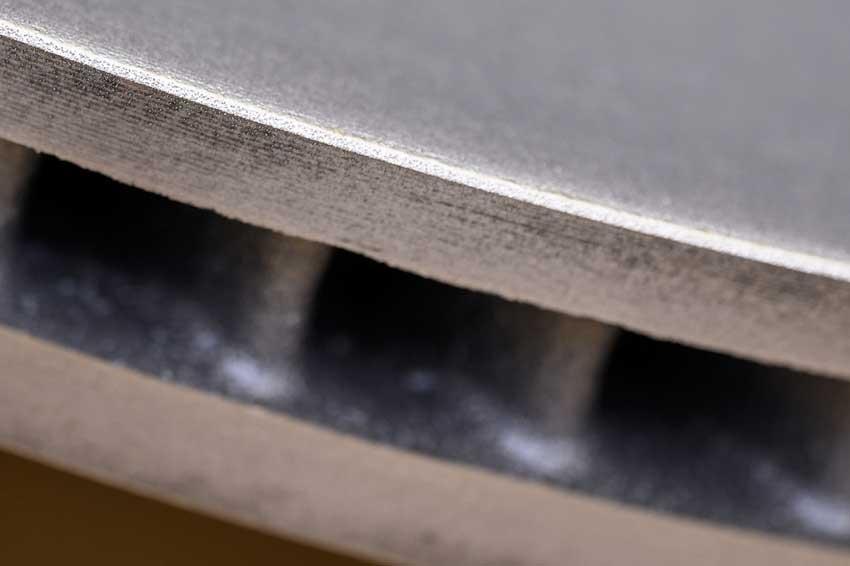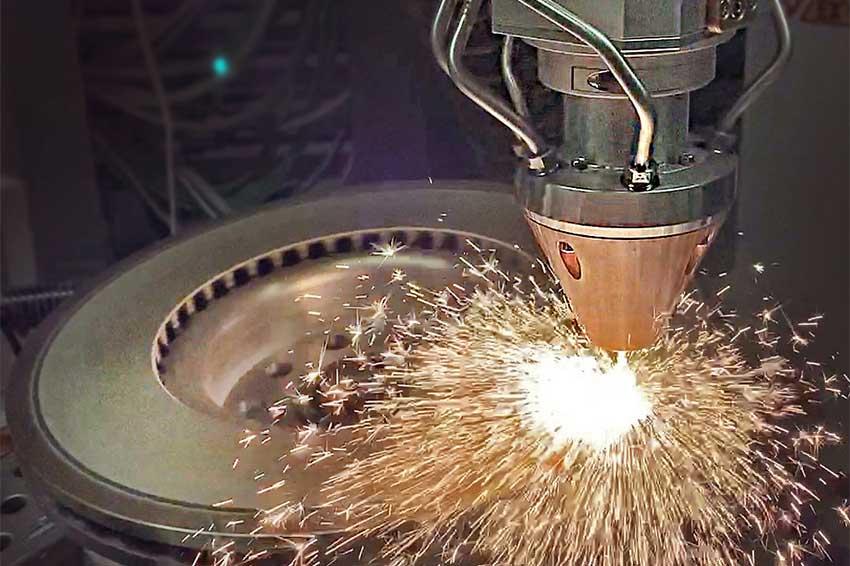Fine dust from brake discs – reduced with laser cladding
15.03.2023 - Laser companies present solutions to counteract the health hazards posed by particulate matter as required by the new EU vehicle emission standard, Euro 7.
One of the greatest health hazards in urban areas is particulate matter emissions from road traffic. Particulates are suspected of causing allergies as well as respiratory, cancer and cardiovascular diseases. Combustion engine emissions are not the only source of particulates, as disc and pad wear in vehicular braking systems itself generates about a quarter of the total. In the draft Euro 7 vehicle emission standard – due to come into force in 2025 – the EU Commission takes account of this fact and for the first time sets specific limits for particulate emissions from braking systems. These limits equally apply without exception to electric vehicles, the latter thus being affected for the very first time by the EU regulations on pollutant emissions from motor vehicles. Automobile manufacturers are now faced with the universal challenge of significantly reducing particulate emissions from braking systems.
One of the most effective measures for reducing brake dust emissions is to apply hard coatings by using a diode-laser-based cladding process, where said claddings offer long-term protection against abrasion and corrosion. The component of health-endangering particulate matter as generated by vehicle braking – tested at PM10, so 10 µm and below – can thus be reduced by up to ninety percent. The new Euro 7 emission standards are expected to specify an overall average of 7 mg/km of PM10 particulate matter, and this can be reliably met. Fortunately, in order to apply these coatings, both the standard gray cast iron material used for brake discs as well as the conventional production processes remain unchanged – a supplementary production step applies the cladding after completion of the original brake disc.
High-tech company Trumpf has brought a laser process to industrial maturity that helps reduce the abrasion of brake discs and thus fine dust emissions. The company is already testing its use in series production with well-known automotive manufacturers and suppliers. “As a technologically leading laser system manufacturer, we have been working closely with the automotive industry for years and know the market very well. High-speed laser metal deposition is cost-effective, can be used in series production and thus offers the potential to become the new standard in brake disc manufacturing,” said Richard Bannmüller, president and CEO Trumpf Laser- and System Technology, at a live online press event today.
About half of the particulate emissions in road traffic are due to wear on brakes, tires, clutches and the road surface, of which about half is brake dust. Brake discs coated by high-speed laser metal deposition emit far less particulate matter than conventional brake discs.
The laser process not only ensures less fine dust, but also less wear. The market potential is huge. In Germany alone, car manufacturers produce around 3.4 million cars every year. For the roughly 49 million cars already on the market in Germany, drivers have had to replace their brake discs several times up to now, often after just 50,000 kilometers, depending on driving style and wear. In the future, this could be necessary much less frequently.
High-speed laser buildup welding also offers corrosion protection, which is particularly important for the brake discs of electric vehicles. These work primarily with recuperation, i.e. energy recovery, when braking, so the disc brake is rarely used. As a result, the brake discs accumulate flash rust more quickly, which leads to performance losses during braking and, in extreme cases, can necessitate premature replacement. “Our laser systems are already in use at numerous manufacturers of electric cars, helping to produce the battery, the e-motor or the high-performance electronics. With high-speed laser metal deposition for brake discs, we offer another manufacturing technology for the mobility of the future,” said Bannmüller. He added that the laser is the decisive tool for making e-cars possible in series production.
Diode laser-based brake disc claddings
Just a week ago, diode laser specialist Laserline has presented their process setup that was developed together with its technology partners. It has now reached series maturity and has additionally ensured integration suitability within Industry 4.0 production environments. Using diode lasers with OPC UA interfaces and up to 22 kW output power, powder-based high-speed cladding processes are utilized, and in some cases leading to a process time of less than one minute per brake disc.
Coupled with appropriate use of materials to yield very effective and at the same time cost-effective claddings, mass production of brake disc cladding becomes affordable for all automotive market segments, even for vehicles in the medium and lower segments. Lastly, further cost considerations indicate specifying a higher power laser in order to achieve a higher throughput, which saves on production space by reducing the space requirements and in turn ultimately significantly reduces the relative investment per disc.
Further reading: Joint solutions for laser material deposition – transfer of the EHLA technology to industry, wileyindustrynews.com, 25 January 2022 • T. Schopphoven, A. Gasser, G. Backes: EHLA: Extreme High-Speed Laser Material Deposition – Economical and effective protection against corrosion and wear, Laser Tech. J. 14(4), 26 – 29, first published 16 June 2017; DOI: 10.1002/latj.201700020 • S. Britten, V. Krause: Industrial Blue Diode Laser Breaks 1 kW Barrier – New cw high power blue diode laser allows controlled heat conduction welding of copper, Laser Tech. J. 16(2), 30 – 33, first published 12 March 2019; DOI: 10.1002/phvs.201900017
Contact
Laserline Gesellschaft für Entwicklung und Vertrieb von Diodenlasern mbH
Fraunhofer Straße 5
56218 Mülheim-Kärlich
Germany
+49 2630 964-4000









